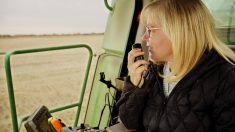In western Manitoba, a couple — we’ll call them Jack, 72, and Mary, 69 — need to sell their five-quarter farm and move on to full retirement. Sale is the only way to get retired, though, because their children, who we’ll call Steve, 41, and Lou, 38, have no interest in farming.
They anticipate some serious tax to pay, for land values have risen from $500 per acre, when they bought their farm, to $6,000 today. They did not do any tax planning for the day they might have to dispose of the farm. As a consequence, they face a hefty tax bill. We asked Nathan Heppner and Erik Forbes, both experienced financial planners with Forbes Wealth Management at Carberry, Man., to look into the couple’s situation.
Tax is not the only problem, Heppner and Forbes explain, for Steve and Lou are likely to need financial help. The way to do that is by holding down tax due on sale and maintaining money for their sons.
Read Also

Gentle treatments for pain in the neck
Heading toward year-end, people unknowingly tense up against the cold and busyness, causing neck pain that can often be treated with appropriate support and gentle mobility, athletic therapist Kathlyn Hossack says.
Let’s look at the tax problem in detail:
Purchase cost: $500 per acre
Sale price: $6,000 per acre
Total acres for sale: 800 (five quarter sections)
Capital gain per acre: $5,500 ($6,000 – $500)
Total capital gain: $4,400 (800 acres x $5,500)
Lifetime capital gains exemption: $2 million ($1 million each — if each qualifies, that is, and exemption not previously used)
Net taxable gain: $2.4 million ($4.4 million less $2 million)
Capital gains inclusion rate: 50 per cent
Taxable capital gain: $1.2 million
Assuming a 50 per cent average tax rate, Jack and Mary could owe $600,000 in tax. That’s a big hit to their retirement funds. There will also be some alternative minimum tax to pay, that is really a prepayment of postponable taxes.
What to do?
Contribute to RRSPs. That is at best a modest deferment of tax, given their ages.
• Invest in tax-sheltered assets such as dividend-paying stocks eligible for the dividend tax credit.
• Donate cash or securities to registered charities that issue tax credits.
• Withdraw funds from non-registered accounts slowly, so as to preserve their Old Age Security from clawbacks.
What to have done?
Looking back at what the couple could have done, there were ways to avoid high taxes on disposal of the farm. These include:
• Use of life insurance to provide tax-free retirement cash.
• A crop share or rental agreement rather than outright sale.
• Having sold land in stages over many years to spread the tax liability. Gains at sale would have raised the couple’s tax brackets and taxes due and therefore raised their exposure to OAS clawbacks.
• Put their land into a corporation. That would have preserved their lifetime capital gains exemption for successive years and allowed gradual drawdowns of corporate assets.
That would have added complexity, but it would have been cost-effective, Forbes and Heppner conclude.















